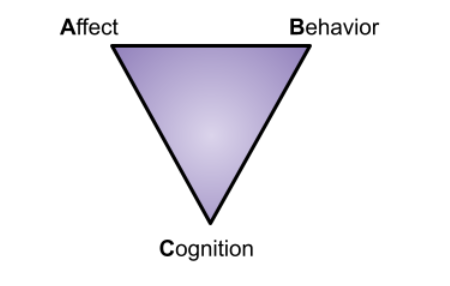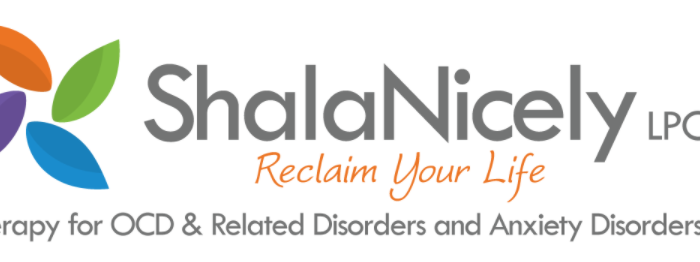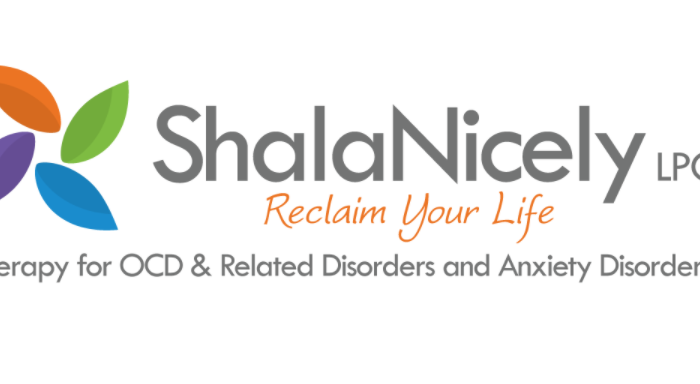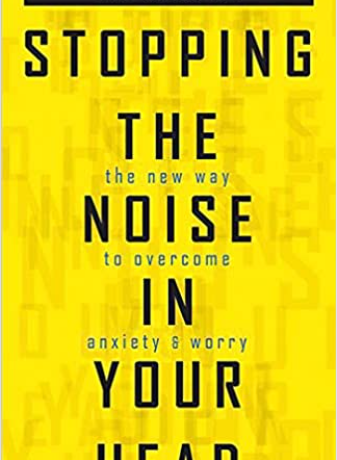
Cognitive Behavioral Therapy (CBT)
First Line, Gold Standard Treatment
Though there are many effective therapy treatments to date for a range of issues, CBT comes out as the most researched, most helpful for the widest range of problems, and can be highly personalized.
This triangle reflects no particular order or prioritization.
- A = Affect, or feelings and emotions
- B = Behavior, or actions
- C= Cognition, or thoughts and beliefs
CBT capitalizes on how each of these three domains have strong relationships to each other. The heart of the theory and practice is based on the knowledge that changing one or more of these domains leads to changes in the other. Another way of looking at it is that the more a person lines up their feelings, thoughts, and behaviors with reality, the more they achieve well-being, and many problems can be alleviated.
Exposure Therapy (ET and ERP)
Relevant Videos
Curated to get you started.
What is Exposure Therapy and How Do You Do It?
Exposure therapy can sound intense. What is it? How is it done? Why is it so effective? Justin K Hughes, MA, LPC explains simply an extremely effective FIRST LINE and “GOLD STANDARD” treatment for anxiety disorders and more.
The 4 Types of Exposure Therapy
Exploring the 4 Types of Exposure Therapy- In Vivo, Imaginal, Interoceptive, and Virtual Reality- Justin offers punctual clarity to the approach of how fears that are being treated can be accessed, whether situationally, in one’s thoughts/imagination, through sensations, or a combination.
"Security is mostly a superstition. It does not exist in nature, nor do the children of men as a whole experience it. Avoiding danger is no safer in the long run than outright exposure."
Specially Curated Resources
These are handpicked, referenced in ACTUAL therapy sessions.
(Sorry, I cannot accommodate outside requests to add to resources.)This page may contain affiliate links. This means that some links on this site will produce a small commission from affiliate sites. Read more

Distinguishing Information-Seeking and Reassurance Seeking
This helpful chart is an educational guide separating info-seeking from reassurance.
View >
Overcoming Unacceptable Thoughts (Houston OCD)
Check out this presentation by several notable clinicians on “overcoming unacceptable thoughts.”
View >
Relapse Prevention in OCD (Shala Nicely)
“As you go into recovery from OCD, it’s good to keep in mind that relapse
prevention is a process, and living how we want to live requires some
maintenance….”

“May” or “May Not” Exposure Scripting (Shala Nicely)
“…MOMN statements, which are a type of exposure scripting, can be used with any type of OCD content…because OCD is not about the content!”
View >
Exposure and Desensitization (U of Mich)
“We spoke about sensitization in the section “Anxiety Fuel.” Now we’ll talk
about desensitization, which means we work to make our anxiety alarm less
sensitive, so it doesn’t go off as often or as loudly.”


Facing Your Fears: Exposure (Anxiety BC)
“An important step in managing anxiety involves facing feared situations, places or
objects. It is normal to want to avoid the things you fear. However, avoidance prevents
you from learning that the things you fear are not as dangerous as you think.”

Key Research Articles on Imaginal Exposure (Science Direct)
“Imaginal exposure refers to patients intentionally confronting specific memories….in their imaginations either by verbally describing … or by writing a description…”
View >
Stopping the Noise In Your Head (Dr. Reid Wilson)
“Dr. Reid Wilson proposes a groundbreaking, paradoxical approach to overcoming anxiety, worry, OCD, panic, and phobias by moving away from comfort, confidence, and security and willingly moving toward uncertainty, distress and discomfort.”
View >From My Blog
Related posts from my blog
What are reasons why Christians don’t pursue therapy? (ChatGPT’s Response)
This is fascinating. I gave into the pop-culture urge of asking ChatGPT for its feedback on why Christians don’t pursue therapy. Its feedback wasn’t bad. What do you think? ChatGPT on Christian avoidance of therapy—Helpful or Hurtful? Here is my prompt: What are reasons why Christians don’t pursue therapy? There are several reasons why […]
Read More >Is Faith Helping or Hindering Your Recovery—Your Anxiety Toolkit podcast guest
As many people search for meaning and answers to suffering, questions of faith and spirituality are being asked with renewed fervor. It is no surprise to me that these topics are critical in mental health care and treatment. Yet, few know how to navigate them well. I hope you’ll listen to Kimberley Quinlan’s Your Anxiety […]
Read More >A Deeper Dive into the role of faith (Christianity) in OCD treatment—the OCD Stories #487
Stuart Ralph is an acclaimed podcast host of the OCD Stories who has both lived experience and expertise as a clinical specialist in the treatment of OCD. Being the most popular podcast dedicated to OCD by far, he has over 7 Million listens from around the world. His podcast is my favorite to share with […]
Read More >Out NOW! The Peace of Christ: Effective Ways to Overcome Anxiety and OCD
Did you miss the webinar? No problem! Here’s the recording on YouTube and the summary from Mental Health Grace Alliance: Justin Hughes, LPC, explains how anxiety and OCD get filtered through the Christian perspective and general strategies for overcoming. Resources and links in the video: Understanding the Overactive Conscience Is it God or my […]
Read More >The 4 D’s in OCD Recovery
[Updated 2025, formerly the original article can be found here: “The 3 D’s in OCD Recovery“] Did you know there are four ways to break OCD’s hold on you? In ERP (Exposure and Response Prevention), we target one thing: facing distress without compulsion. That simple concept is hard to live out. Because OCD is […]
Read More >The Peace of Christ: Effective Ways to Overcome Anxiety and OCD [Free Webinar this week only]
This Friday! Join us for a webinar by The Mental Health Grace Alliance. The Peace of Christ: Effective Ways to Overcome Anxiety and OCD Apr 25, 2025 10:00 AM CST Click HERE to sign up now! “In this powerful webinar, licensed professional counselor (LPC, MA) Justin Hughes will explore how anxiety and OCD affect […]
Read More >Stay in the know with regular articles to your inbox








